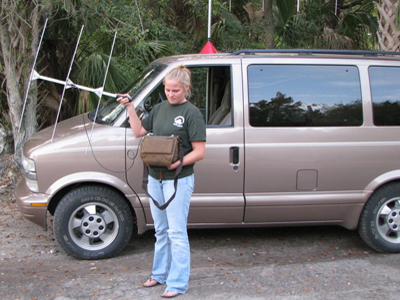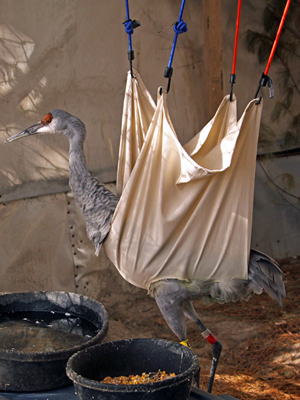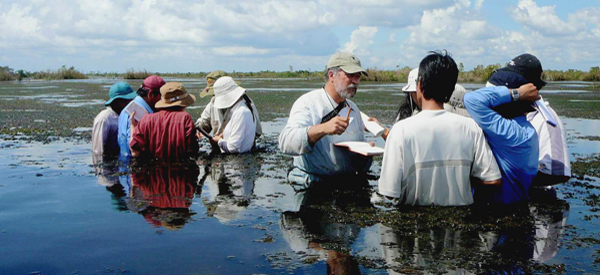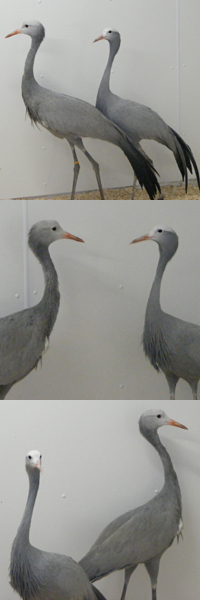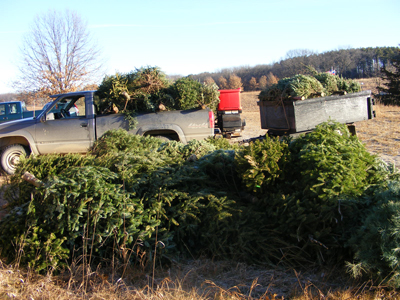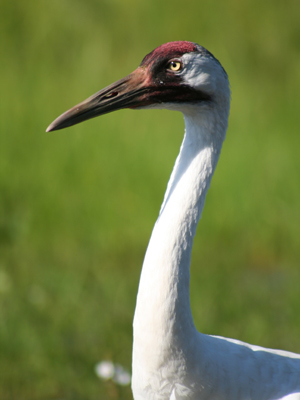 Conservation leadership is at the heart of ICF’s global mission to save cranes and the diverse ecosystems, watersheds, and flyways on which they and all of us depend. We are dedicated to inspiring and empowering leaders at all levels. We provide training and practical experience for individuals and organizations engaged in community-based conservation, education, and outreach at key crane sites, building on their knowledge of cultural norms and practices. We also facilitate international leadership on key cross-cutting issues that affect cranes, such as sustainable water management. And sometimes conservation leaders find us, and together we tackle challenges beyond the reach of ICF alone. In this issue, we share stories from conservation leaders who are on the front lines of saving cranes and their landscapes on three continents.
Conservation leadership is at the heart of ICF’s global mission to save cranes and the diverse ecosystems, watersheds, and flyways on which they and all of us depend. We are dedicated to inspiring and empowering leaders at all levels. We provide training and practical experience for individuals and organizations engaged in community-based conservation, education, and outreach at key crane sites, building on their knowledge of cultural norms and practices. We also facilitate international leadership on key cross-cutting issues that affect cranes, such as sustainable water management. And sometimes conservation leaders find us, and together we tackle challenges beyond the reach of ICF alone. In this issue, we share stories from conservation leaders who are on the front lines of saving cranes and their landscapes on three continents.
Results for "Seguros para auto en New Mexico llama ahora al 888-430-8975 Seguros de coche ofertas Carro seguro Asegurar auto online Seguros de autos baratos Las aseguradoras Seguro todo riesgo carro"
The Elusive Whooping Crane #2-11
![]() ICF’s Eva Szyszkoski, Tracking Field Manager for the Whooping Crane Eastern Partnership (WCEP), has been in Alabama banding the group of nine ultralight-led Whooping Cranes, which were released at Wheeler National Wildlife Refuge earlier this month. Last week, Eva was tracking a tenth Whooping Crane (#2-11), who had separated from the other nine juvenile cranes during migration in Wisconsin last October and wintered in Florida. Following is Eva’s report on her attempt to re-capture #2-11 to replace it’s radio transmitter (and news that spring migration has started!).
ICF’s Eva Szyszkoski, Tracking Field Manager for the Whooping Crane Eastern Partnership (WCEP), has been in Alabama banding the group of nine ultralight-led Whooping Cranes, which were released at Wheeler National Wildlife Refuge earlier this month. Last week, Eva was tracking a tenth Whooping Crane (#2-11), who had separated from the other nine juvenile cranes during migration in Wisconsin last October and wintered in Florida. Following is Eva’s report on her attempt to re-capture #2-11 to replace it’s radio transmitter (and news that spring migration has started!).
Aransas Refuge Reports on Whooping Crane Status in Texas
 This has been a busy month for Whooping Crane activity since our last report. Aransas National Wildlife Refuge has received an additional 0.72 inches of precipitation and salinity levels remain higher than ideal. We have continued to help alleviate the low food resources by adding to our prescribed burn totals. This week alone we have burned an additional 4,682 acres of Whooping Crane habitat. Biologists observed the Whooping Cranes eating roasted acorns and are seeing continued usage.
This has been a busy month for Whooping Crane activity since our last report. Aransas National Wildlife Refuge has received an additional 0.72 inches of precipitation and salinity levels remain higher than ideal. We have continued to help alleviate the low food resources by adding to our prescribed burn totals. This week alone we have burned an additional 4,682 acres of Whooping Crane habitat. Biologists observed the Whooping Cranes eating roasted acorns and are seeing continued usage.
A Helping Hand
 At ICF’s Baraboo headquarters, we have all 15 species of crane, many for purposes of breeding and maintaining the valuable genetic lines of several endangered species. That responsibility, however, precludes us from taking in any injured cranes, either from public reports or as a result of our research. Wild birds have the potential of bringing with them any number of diseases that could wreak havoc with our captive population; that is a risk we cannot take.
At ICF’s Baraboo headquarters, we have all 15 species of crane, many for purposes of breeding and maintaining the valuable genetic lines of several endangered species. That responsibility, however, precludes us from taking in any injured cranes, either from public reports or as a result of our research. Wild birds have the potential of bringing with them any number of diseases that could wreak havoc with our captive population; that is a risk we cannot take.
ICF Partners with U.S. State Dept to Study Pollutants in Mekong
 ICF has worked in the Mekong River Basin since 1988, coordinating community projects, long-term wetland restoration activities, and training for a new generation of wetland managers. Working with eight founding institutions, ICF created the University Network of Southeast Asia in 2001 to establish a training program in wetland ecology and management for students and professionals in the Mekong Basin. Over the past ten years, this network has grown to include 18 member universities and has trained over 200 students in wetland management. Many are now leaders in universities and conservation organizations working within the region.
ICF has worked in the Mekong River Basin since 1988, coordinating community projects, long-term wetland restoration activities, and training for a new generation of wetland managers. Working with eight founding institutions, ICF created the University Network of Southeast Asia in 2001 to establish a training program in wetland ecology and management for students and professionals in the Mekong Basin. Over the past ten years, this network has grown to include 18 member universities and has trained over 200 students in wetland management. Many are now leaders in universities and conservation organizations working within the region.
New Blue Crane Joins ICF Flock
 On November 16, 2011, ICF received a young male Blue Crane from the National Zoological Park (NZP). The young crane, named Kito (Swahili for ‘precious child’) by ICF staff, was hatched in May 2011 and was parent–reared at NZP. Kito was donated to ICF to be paired with our female Blue Crane, Veld. Veld lost her previous mate in 2009 and, as many visitors to ICF since then may know, hasn’t been comfortable spending much time on exhibit.
On November 16, 2011, ICF received a young male Blue Crane from the National Zoological Park (NZP). The young crane, named Kito (Swahili for ‘precious child’) by ICF staff, was hatched in May 2011 and was parent–reared at NZP. Kito was donated to ICF to be paired with our female Blue Crane, Veld. Veld lost her previous mate in 2009 and, as many visitors to ICF since then may know, hasn’t been comfortable spending much time on exhibit.
Christmas Trees Benefit Crane Conservation
 The fruit cake is finally gone, the ornaments have all been packed away, and the Christmas tree now lies on the curb. The holiday season has past, but for ICF’s Crane Conservation Department (CCD) this means it’s time to start early preparations for our upcoming breeding season!!
The fruit cake is finally gone, the ornaments have all been packed away, and the Christmas tree now lies on the curb. The holiday season has past, but for ICF’s Crane Conservation Department (CCD) this means it’s time to start early preparations for our upcoming breeding season!!
Every year during the 2-3 weeks following Christmas, CCD staff hooks up the truck and trailer and heads into Baraboo to collect upwards of 70 Christmas trees to be used as capture corners during the breeding season. This year, we were fortunate to have the added assistance from the Village of West Baraboo Public Works Department, who graciously offered to deliver the trees they collected to our site!
Wildlife Agency Urges Crane Spectators to Maintain Distance
 As a pair of Whooping Cranes remains in North Carolina’s Clay County, the U.S. Fish & Wildlife Service urges spectators to maintain their distance in order to not spook the cranes and reduce their familiarity with humans.
As a pair of Whooping Cranes remains in North Carolina’s Clay County, the U.S. Fish & Wildlife Service urges spectators to maintain their distance in order to not spook the cranes and reduce their familiarity with humans.
“These cranes are among the rarest animals on the planet. In our efforts to recover this species, I can’t stress enough how important it is for people to give the birds the space they need to feel comfortable and go peacefully about their daily lives of finding food, water, shelter, and developing the bond that will lead to successful nesting in the spring,” said Bill Brooks, a biologist with the U.S. Fish & Wildlife Service.
Hours, Admission & Directions
Hours and Parking Our site is open daily from May 1 to October 31, from 9 a.m. to 5 p.m. Public guided tours are at 10 a.m. and 1 and 3… Continue reading Hours, Admission & Directions
Dr. George Archibald, Co-Founder & Senior Conservationist
The future of many crane species was once as fragile as the delicate and graceful birds themselves. George Archibald’s visionary leadership in international conservation efforts over the past 40 years… Continue reading Dr. George Archibald, Co-Founder & Senior Conservationist


